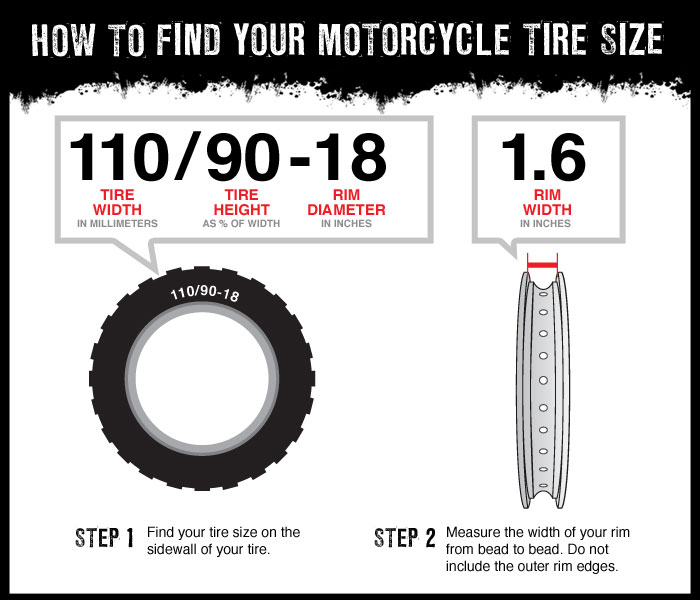12Mar
Jan Heine2022-07-17T08:18:49-07:00
By Jan Heine Tires 27 Comments
Many cyclists want to ride on wider tires, but are limited by the clearances of their bikes. So they want to use the widest tires their bike can fit. How do you determine your bike’s maximum tire width?
You need a set of calipers (below). If you don’t have any, bike shops have them. Please leave a generous tip if you ask a shop mechanic to help you with this!
1. Measure your current tires
Measure the width of your current tires. Be careful not to pinch the tire. Instead, increase the opening of the calipers in 0.5 mm increments, and check whether the opening has play when it is slipped over the tire.
(The calipers “rattle” when you move them.) When this happens, the calipers are set just a tad larger than the actual width of your tires. Use this measurement as your current tire width.
If you pinch the tire with the calipers, you may get a measurement that is up to 2 mm narrower. Also don’t use the width that is printed on the side of your current tires. It’s not always accurate enough for this purpose.
2. Check your clearances
Check all around your wheels how much clearance you have between tire and frame/fork/brakes. Most important are:
We recommend a minimum of 3 mm clearance between your tires and the closest part of your bike.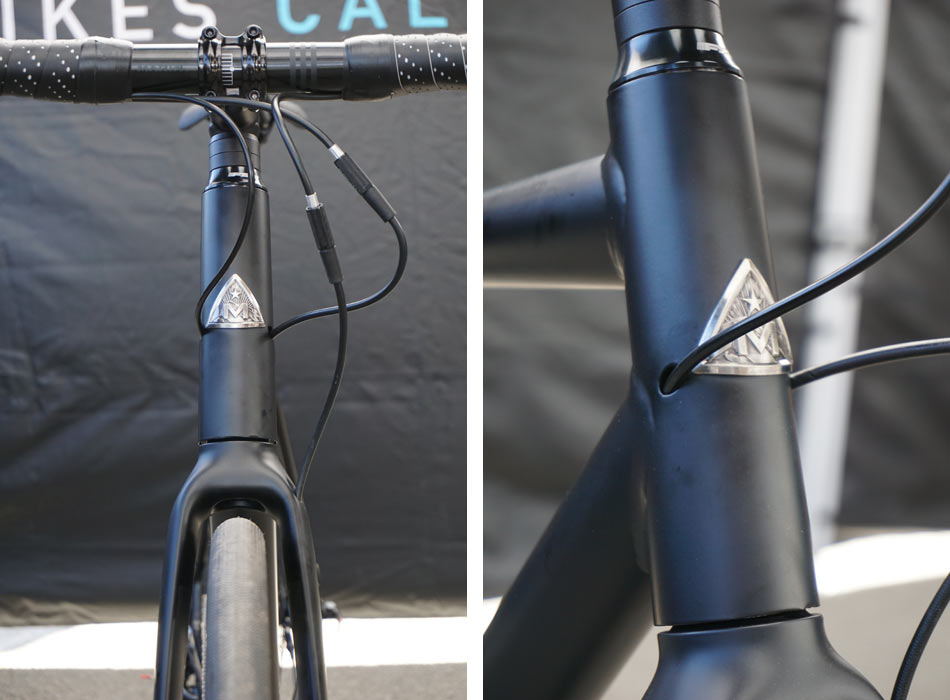 Any less, and you risk having your tire rub under hard acceleration or if the wheel develops a slight wobble.
Any less, and you risk having your tire rub under hard acceleration or if the wheel develops a slight wobble.
3. Calculate your maximum tire width
Start with the smallest clearance between your existing tire and bike. Then deduct the gap between tire and frame/fork/brake/fender – 3 mm – to get the available clearance for your wider tire. Multiply this by 2 (you have that much room on both sides of the tire), add the current tire width, and you get the maximum tire width:
max. tire width = 2 x (tightest clearance – 3 mm) + current tire width
Example: Your current tires are 29 mm wide. You have 5 mm clearance at the tightest spot. That leaves 2 mm available clearance. You can run 4 mm wider tires than your current ones. Your maximum tire width is 33 mm:
max. tire width = 2 x (5 mm – 3 mm) + 29 mm = 33 mm
This assumes that your new tires have a similar height-to-width ratio as your existing ones. Some inexpensive tires can be much taller than they are wide, but high-end tires usually are relatively round, and this formula works well.
Some inexpensive tires can be much taller than they are wide, but high-end tires usually are relatively round, and this formula works well.
If you find yourself between two available tire sizes, I suggest using the narrower tire. High-end tires tend to expand over time as the casing “relaxes,” and you don’t want your tire to rub every time you rise out of the saddle and flex your wheel. If you find that you still have extra clearance, you can go up one more size when your new tires wear out.
By the way, the bike in the photos does not appear to have extra clearance, so if your bike looks like that, you should probably stick with your current tire width. You still can improve the ride and performance of your bike by using more supple tires with higher-quality casings.
Read more about why supple sidewalls are more important than a few millimeters in tire width.
Photo credits: Ernie Fong
Jan Heine
Tires are a big deal. You can have a totally dialed bike with all the fanciest parts under the sun but if your tires aren’t firing on all cylinders, the whole ride can be turned into a serious bummer, nay, an early funeral if things go real bad. After all, tires are your bicycle's interface with whatever surface you chose to ride and different surfaces require different tread patterns, pressures and widths. If one of those things is off, things could get a bit loose. Sometimes that’s a lot of fun. Other times, it hurts a lot. It’s good to take the time out to think about how you want your bike to interface with the ground. What sort of tread do you need? What sort of tire pressure will work the best? Are you going to be sinking into the soft stuff, or saddling yourself with the unnecessary burden of tires that are too wide? Can a tire actually be too wide?
You can have a totally dialed bike with all the fanciest parts under the sun but if your tires aren’t firing on all cylinders, the whole ride can be turned into a serious bummer, nay, an early funeral if things go real bad. After all, tires are your bicycle's interface with whatever surface you chose to ride and different surfaces require different tread patterns, pressures and widths. If one of those things is off, things could get a bit loose. Sometimes that’s a lot of fun. Other times, it hurts a lot. It’s good to take the time out to think about how you want your bike to interface with the ground. What sort of tread do you need? What sort of tire pressure will work the best? Are you going to be sinking into the soft stuff, or saddling yourself with the unnecessary burden of tires that are too wide? Can a tire actually be too wide?
One of the questions that frequently echoes through the halls of the Surly Mothership is; “will such and such tire fit in such and such frame?” The answer to that question is generally along the lines of, if it is a Surly frame and you’re using the wheel size it was designed around, there’s an excellent chance the tire you’re talking about will fit.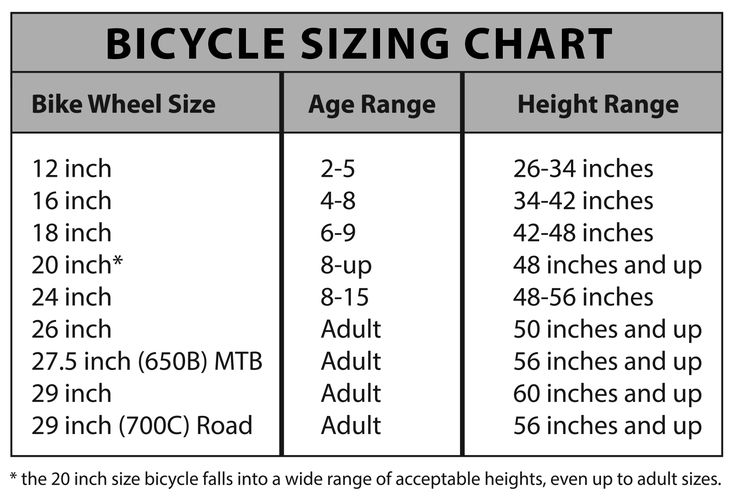 If you’re using a wheel size that the frame wasn’t designed for like, say, a
650b wheel on a LHT frame, there’s a chance but there’s no way for us to know because we didn’t design the bike for that wheel size. Maybe? Give it a try, you seem like a smart cookie.
If you’re using a wheel size that the frame wasn’t designed for like, say, a
650b wheel on a LHT frame, there’s a chance but there’s no way for us to know because we didn’t design the bike for that wheel size. Maybe? Give it a try, you seem like a smart cookie.
Tire fit on Surly frames isn’t usually an issue because tire clearance is one of the five pillars of the Surly Design Philosophy, but anyone that has ever messed around with a good sample of tires from different manufacturers knows that, just because it has a number on the side doesn’t mean it’s going to measure out the same as another brand. Tire manufacturers will use different points on the tire to take their measurements so there can be confusion if you’re trying to fit tires into frames that, unlike us, don’t put such a high importance on having a lot of tire clearance. And we all know, bicycle tires can get pretty damn expensive so when you buy them you want to know that they will fit in your frame.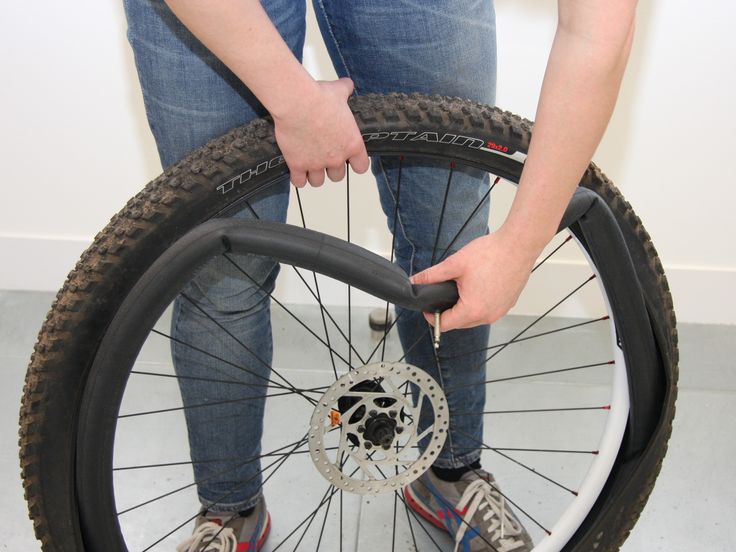
That covers tire size, but how exactly do we figure out frame clearance? That’s a little easier. When we design a frame we go into it not just with the nebulous declaration that it must be able to fit humungous tires, we have an idea of what size wheel and tire this frame will work best with and that’s all part of our design process. We put a lot of thought into tire size and the effect it will have on the handling of any bike. Many of our fat bikes and trail bikes are great examples of this concept because tire size plays such an important role in how you perceive the handling of your bike. This is clearly the reason we didn’t put 650Ax23mm tires on the Instigator 2.0, but instead developed our own tire size, 26+ (a 26 x 2.75” tire on a 50mm rim).
Many an armchair engineer and late-night garage tinkerer have discovered that, because we’re such fans of big tires, many of our frames will not only fit huge tires, but slightly narrower tires of larger wheel diameters, or yet fatter tires of smaller wheel diameters. Let’s look at the venerable 1x1 for this example. On our website, we list the tire clearance for the 1x1 frame and fork as 26 x 2.75.” So what does this really mean? Does it mean that you could probably throw a 27.5 x 2.1” wheel/tire combo in your 1x1? I dunno (shrug). We designed it for 26” wheels so that’s what we’re sticking with. Yeah, 27.5” wheels are all the rage now, but we made that bike to be ridden with 26” wheels so if you want to get into the double black diamond, completely out of bounds, at your own risk behavior of installing different wheel sizes on your bike, hey man, that’s your thing. All I’m gonna say is that it’s gonna mess with your bottom bracket height and the center of gravity of your bike and it might handle kinda stupid.
Let’s look at the venerable 1x1 for this example. On our website, we list the tire clearance for the 1x1 frame and fork as 26 x 2.75.” So what does this really mean? Does it mean that you could probably throw a 27.5 x 2.1” wheel/tire combo in your 1x1? I dunno (shrug). We designed it for 26” wheels so that’s what we’re sticking with. Yeah, 27.5” wheels are all the rage now, but we made that bike to be ridden with 26” wheels so if you want to get into the double black diamond, completely out of bounds, at your own risk behavior of installing different wheel sizes on your bike, hey man, that’s your thing. All I’m gonna say is that it’s gonna mess with your bottom bracket height and the center of gravity of your bike and it might handle kinda stupid.
With bikes, framesets and forks, we list the “least common max tire clearance of any particular component”, that is, whichever component has the least “max tire clearance” is what is listed as the “max tire clearance”. Additionally, we only list the max tire width of the tire “type” it was designed to work with.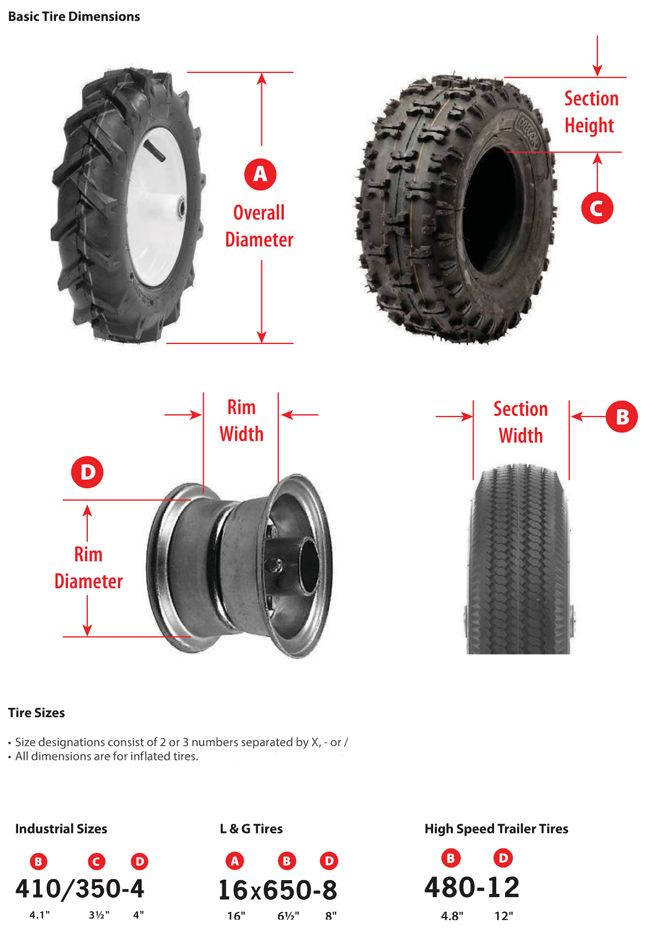
For example, on the 1x1 frameset we list 26 x 2.75” as max tire size. That is what fits in both the frame and the fork, even though the fork will fit up to a 26 x 3”. Now tinkerers, magicians, and engineers (amateur or professional) also know (or could deduce) that the 1x1 will fit many 650b knobby tires, and even some 29”er mountain tires, but we do not list those max tires clearances, because the 1x1 is designed for 26” treads.
So that's about it for now. If you want to know the max tire clearance of a particular bike or frame, simply head over to the bike model's page, scroll down to the Spec & Geo section and reference the frame spec chart. There you will find official information on the max frame and fork tire clearances. Below is an example from the Bridge Club's Page. Arrows included for convenience.
The standard designation is based on the outside diameter of the tire. This size is usually expressed in either inches (26", 27", etc. ) or millimeters (650, 700, etc.).
) or millimeters (650, 700, etc.).
Unfortunately, the evolution of rims and tires has led to the fact that this marking no longer matches the actual diameter. The history of this confusion dates back to the 30s of the last century, when heavy thick tires "baluners" measuring 26 x 2.125 were popular, which are still installed on some pleasure and beach bikes. The outer diameter of such a wheel is very close to 26". Many cyclists, however, were not completely satisfied with the characteristics of these wheels and wanted something faster and lighter. The industry responded to their request by producing lighter and narrower tires that fit the same rim, and designated 26 x 1.75.
Although these tires continued to be called "26" tires, their actual diameter was 25 5/8", not 26". Later, the same rim size was used by the pioneers of the US West Coast mountain bike, which remains the standard size for mountain bikes today. The market began to dictate its terms to manufacturers, and tires with a width of only 25 millimeters for the “26-inch” rim appeared on sale. In fact, the outer diameter of the wheel was 24 7/8".
In fact, the outer diameter of the wheel was 24 7/8".
In the standard tire size designation, the second number or letter code indicates its width. For example, 26 x 1.75; 27 x 1 1/4; 650B; 700C.
Please note that in the standard inch tire size designation, its width can be indicated as a decimal fraction (26 x 1.75) or a simple one (26 x 1 3/4). Although in a mathematical sense the width of these tires is equivalent, in practice they are incompatible. This fact often leads to the fact that an insufficiently competent buyer purchases a tire of the wrong size.
In general, it's hard to come up with a generalized rule for tire sizes, but I was able to identify one pattern:
If the size of two tires taken coincides mathematically, but one of them is expressed as a decimal and the other as a simple fraction, these two tires are definitely incompatible.
In a fierce competition, the accuracy of information provided by manufacturers often suffers. Let's say you're looking for high quality 700-25 tires. Naturally, you study both catalogs and advertisements to find the lightest tires in this size. If, for example, Pepsi Tire and Coke Tire produce tires using the same technology and roughly the same quality, but Pepsi labels a 24mm tire as 700-25, it will weigh less than a fairly labeled 700-25 tire from Coke. This marketing technique gives Pepsi a tangible advantage. In response, Coke is releasing the even lighter 700-23 tire, again labeling it 700-25.
Let's say you're looking for high quality 700-25 tires. Naturally, you study both catalogs and advertisements to find the lightest tires in this size. If, for example, Pepsi Tire and Coke Tire produce tires using the same technology and roughly the same quality, but Pepsi labels a 24mm tire as 700-25, it will weigh less than a fairly labeled 700-25 tire from Coke. This marketing technique gives Pepsi a tangible advantage. In response, Coke is releasing the even lighter 700-23 tire, again labeling it 700-25.
In the 70s and 80s, this marketing ploy was very popular. As a result, the situation got completely out of control, and all manufacturers still had to take their heads and start indicating only the true dimensions of their products.
The International Organization for Standardization (ISO) has developed a universal tire size designation system in order to avoid errors and various incompatibility issues. This system was originally known as the "ETRTO system", developed by the company of the same name (European Tire and Rim Technical Organization).
The ISO system uses two numbers. The first is the width of the tire or rim in millimeters. The actual width of the tire depends on the width of the rim, which is measured along the inner beads (see figure).
The second most important ISO number is the rim seat diameter (BSD, from the English "Bead Seat Diameter") in millimeters. It determines the interchangeability of tires. If this number matches the rim and tire, then they are compatible.
For example, a 700 x 20 C road tire is ISO 20-622; hybrid tire 700 x 38 - like 38-622. Due to the difference in width, they may not be perfect replacements for each other, but most importantly, any rim that fits a 20-622 tire will also fit a 38-622 tire.
Also, it is important to consider that the width of the tire should be 1.45-2 times wider than the inner width of the rim.
If you deflate a tire and measure its bead width, the result will be approximately 2.5 times the ISO value.
The following tables show the relationship between US standard sizes and ISO bore.
| 29" | 622 | Accepted name introduced by marketers. Refers to tires with a 622 mm bore ("700c"). |
| 28 x 1 1/2 | 635 | English, Danish, Chinese and Indian bar brake road bikes (also designated F10, F25, 700 B). |
| 28 x 1 5/8 x 1 1/4 | 622 | Obsolete Canadian F.13 designation. |
| 28 x 1 5/8 x 1 1/4 | 622 | Northern European designation for 622 mm (700 C) tires. |
| 27 x [number] | 630 | Old road bikes. |
| 26 x 1 (650 C) | 571 | Triathlon, time trial, small size road bikes. |
| 26 x 1 1/4 | 597 | Old British sports and club bikes. |
| 26 x 1 3/8 (S-6) | 597 | Schwinn light bicycles. |
| 26 x 1 3/8 (E.A.3) | 590 | Most 3-speed bikes, 10-speed kids bikes or supermarket bikes. |
| 26 x 1 1/2 (650B) | 584 | French touring or touring bikes, a few Raleigh (USA) and Schwinn mountain bikes. |
| 26 x 1 3/4 (S-7) | 571 | Schwinn cruisers. |
| 24 x 1 | 520 | High quality wheels for small riders. |
| 24 x 1 1/8 | 520 or 540 | Buyer beware! |
| 24 x 1 1/4 | 547 | Children's bicycles Schwinn or British. |
| 24 x 1 3/8 (S-5) | 547 | Schwinn light children's bicycles. |
| 24 x 1 3/8 (E-5) | 540 | British children's bicycles, most wheelchairs. |
| 20 x 1 1/8 20 x 1 1/4 20 x 1 3/8 | 451 | Lightweight children's bikes, BMX for light riders, some ligerades.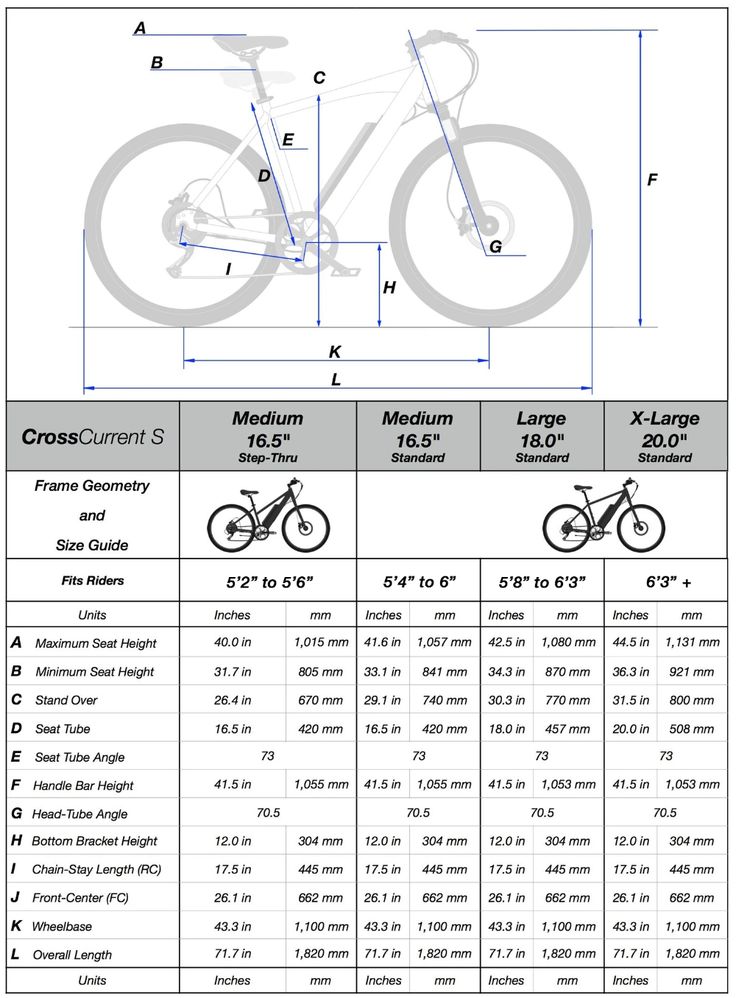 |
| 20 x 1 3/4 | 419 | Schwinn children's bicycles. |
| 17 x 1 1/4 | 369 | Alex Moulton. |
| 16 x 1 3/8 | 349 | Old Moulton, Brompton and other folding bicycles, ligerade front wheels, children's bicycles. |
| 16 x 1 3/8 | 337 | Extremely mysterious tire size. |
| 16 x 1 3/8 | 335 | Polish children's bicycles. |
| 16 x 1 3/4 | 317 | Schwinn children's bicycles. |
| 12 1/2 x [number] | 203 | Children's bicycles, scooters |
| 10x2 | 152 | Wheelchairs. |
| 8 x 1 1/4 | 137 | Wheelchairs. |
It is also worth noting that initially fractional sizes were introduced for old rims with straight sidewalls.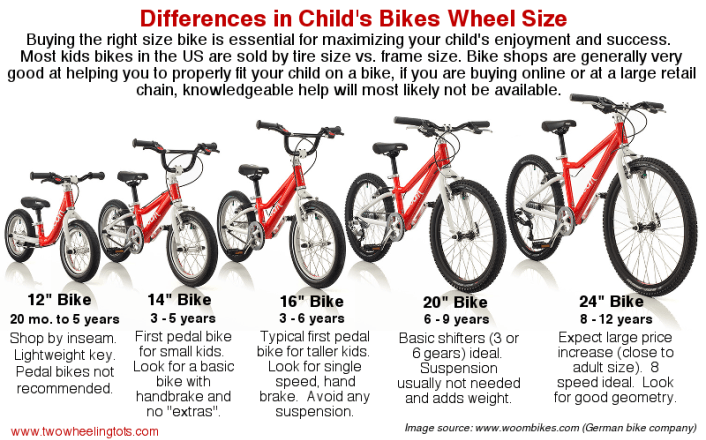 The more functional dimensions of 571mm / 26 x 1 and 630mm / 27 came later, on lug rims.
The more functional dimensions of 571mm / 26 x 1 and 630mm / 27 came later, on lug rims.
| 29" | 622 | Accepted name introduced by marketers. Applies to 622mm ("700c") tires. |
| 28 x [dec. number] | 622 | Some German tire manufacturers use this designation for tires with a bore diameter of 622 mm ("700c"). |
| 26 x 1.00 to 2.3 | 559 | Most mountain bikes, cruisers, etc. Except as follows: |
| 26 x 1.25 (obsolete) | 599 | Very old USA light bicycles. |
| 26 x 1.375 | 599 | Very old USA light bicycles. |
| 24x1.5-24x2.125 | 507 | Children's mountain bikes, cruisers. |
| 22 x 1.75; 22 x 2.125 | 457 | Children's bicycles.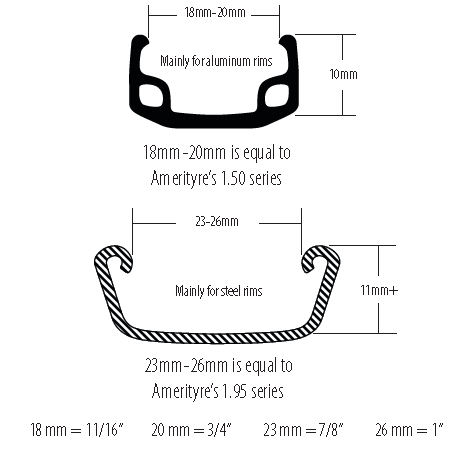 |
| 20x1.5-20x2.125 | 406 | Most BMX bikes, kids bikes, folding bikes, touring bikes and some ligerades. |
| 18 x 1.5 | 355 | Birdy folding bikes. |
| 18x1.75-18x2.125 | 355 | Children's bicycles. |
| 16x1.75-16x2.125 | 305 | Children's bicycles, folding, touring and some ligerades. |
Initially, in the French system, the first number indicated the outer diameter of the rim in millimeters, followed by a letter that determined the width: "A" - narrow, "D" - wide. The letter code is no longer associated with tire width, as narrow tires are often made to fit rims originally designed for wide tires. For example, the 700C size was originally a wide size, but now there are also very narrow 700C tires that have an actual diameter of only 660mm.
| 700A | 642 | Obsolete size. |
| 700B | 635 | Road bicycles with bar brake system. |
| 700 C | 622 | Road bikes, hybrids, 29" mountain bikes. (28 x 1 1/2 F.13 Canada) |
| 700D | 587 | Odd size previously used on some GT bikes. |
| 650A | 590 | French version 26 x 1 3/8; Italian high quality bikes for light riders. |
| 650 B | 584 | French pleasure bikes, tandems, touring bikes; some old Raleigh bikes and Schwinn mountain bikes. |
| 650 C | 571 | Triathlon, time trial, high quality road bikes for light weight riders. |
| 600A | 540 | European children's road bikes, most wheelchairs. |
| 550A | 490 | European children's road bikes. |
| 500A | 440 | European children's folding bikes.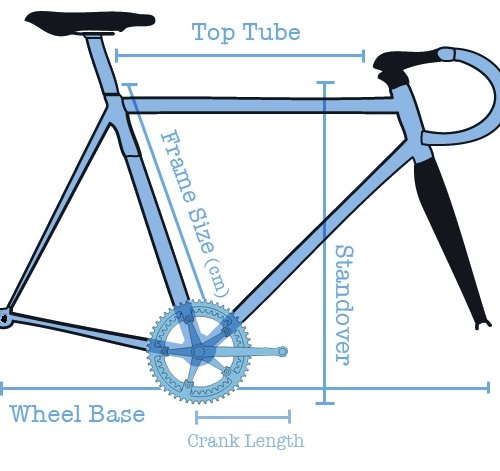 |
| 450A | 390 | European children's bicycles. |
| 400A | 340 | European children's bicycles. |
| 635 | 28 x 1 1/2, 700B |
| 630 | 27 x number |
| 622 | 700 C, 28 x (double shot), 29 in. (28 x 1 1/2 F.13 Canada) |
| 599 | 26 x 1.25 x 1.375 |
| 597 | 26 x 1 1/4, 26 x 1 3/8 (S-6) |
| 590 | 26 x 1 3/8 (E.A.3), 650 A |
| 587 | 700D |
| 584 | 650B, 26 x 1 1/2 |
| 571 | 26 x 1, 26 x 1 3/4, 650 C |
| 559 | 26x1.00-x2.125 |
| 547 | 24 x 1 1/4, 24 x 1 3/8 (S-5) |
| 540 | 24 x 1 1/8, 24 x 1 3/8 (E.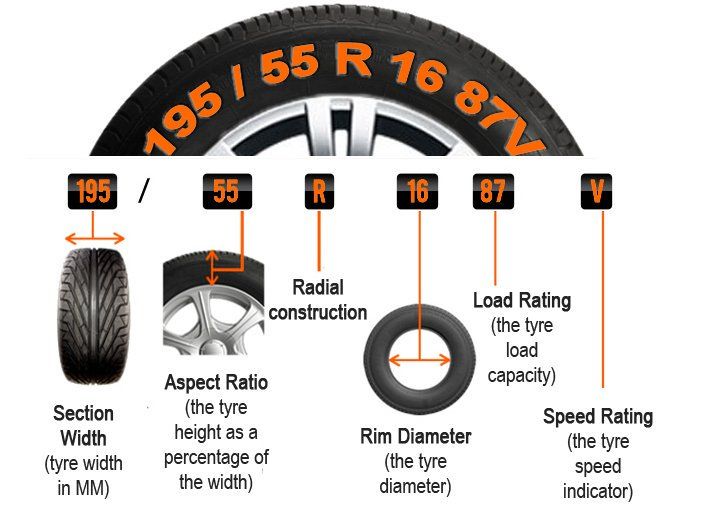 5), 600 A 5), 600 A |
| 520 | 24 x 1, 24 x 1 1/8 |
| 507 | 24x1.5-x2.125 |
| 490 | 550A |
| 457 | 22 x 1.75; x 2.125 |
| 451 | 20 x 1 1/8; x 1 1/4; x 1 3/8 |
| 440 | 500A |
| 419 | 20 x 1 3/4 |
| 406 | 20x1.5-x2.125 |
| 390 | 450A |
| 369 | 17 x 1 1/4 |
| 355 | 18x1.5-x2.125 |
| 349 | 16 x 1 3/8 |
| 340 | 400A |
| 337 | 16 x 1 3/8 |
| 317 | 16 x 1 3/4 |
| 305 | 16x1.75-x2.125 |
| 203 | 12 1/2 x number |
| 152 | 10x2 |
| 137 | 8 x 1 1/4 |
Of course, you can use almost any combination of tire and rim that has the same fit, but from a practical point of view it is unreasonable for the width of the tire to differ significantly from the width of the rim.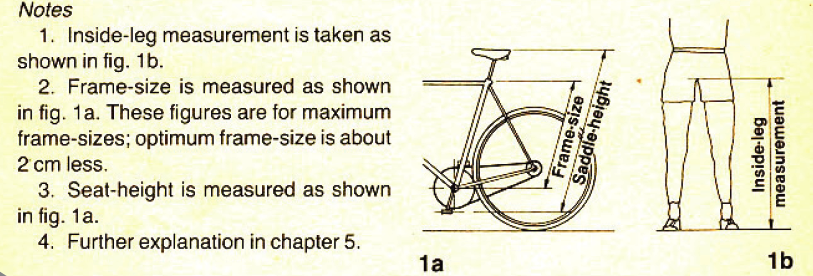
If the tire is too narrow for the rim, the risk of damage from various bumps and bumps increases significantly.
If the tire is too wide, the sidewalls of the tire are more likely to wear out quickly and the risk of losing control of the bike on a flat tire increases. Plus, handling at low speeds noticeably worsens.
Unfortunately, in order to save weight, modern mountain bikes use extremely narrow rims. These rims do not fit wide tires very well, unless they are pumped very hard. This, in turn, leads to unnecessary stress on the sidewalls of the rim, and also loses the main point of installing wide tires designed to work with low pressure.
GMS - Global Measuring System. Existing standards for measuring the size of an inflated tire do not take into account the difference in tread depth. To solve this problem and enable a more accurate comparison of tire performance, WTB introduced its measurement standard - GMS.
The standard consists of two numbers in millimeters: the first characterizes the width of the base of the tire; the second is the width of the outside of the tire, measured over the tread.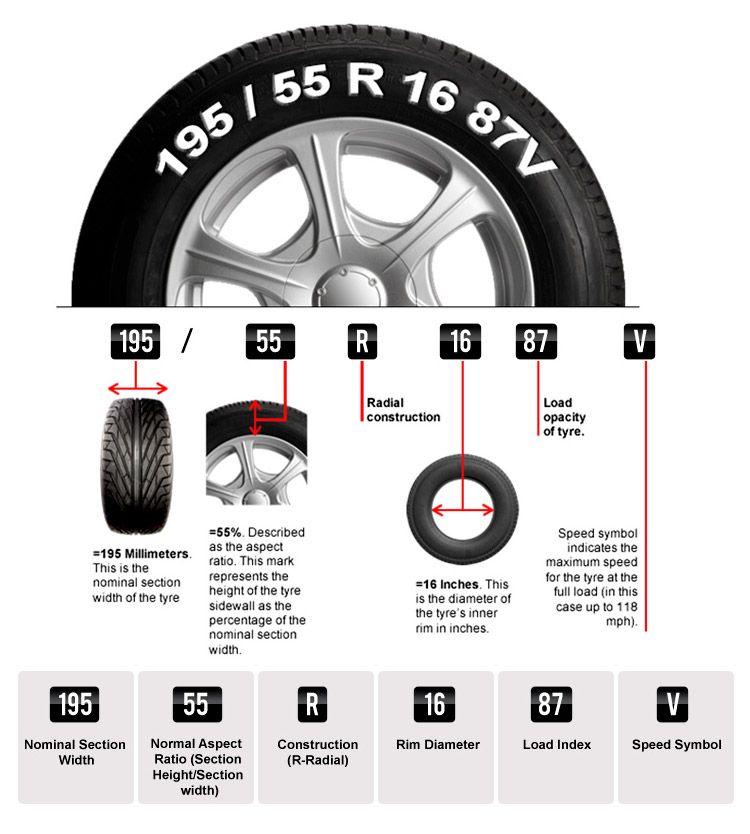 Measurements are made on a rim with an internal width of 20 mm, and a tire inflated to 60 psi and after 24 hours of exposure.
Measurements are made on a rim with an internal width of 20 mm, and a tire inflated to 60 psi and after 24 hours of exposure.
In addition to the dimensions of the base and the outer width of the tread, the allowable tire pressure, the main characteristics of the tread and its contact area are indicated.
Single tube tires are most commonly used for cycling. Single tubes do not have sidewalls. During their production, the ends of a solid tire tube are connected to each other, forming a torus. Therefore, sometimes the tubular tire is called "closed" (English "sew-up"). The single tube fits only to a special rim, on which it is attached with a special glue.
6 different sizes of single tubes are known, but only 2 of them have survived to this day.
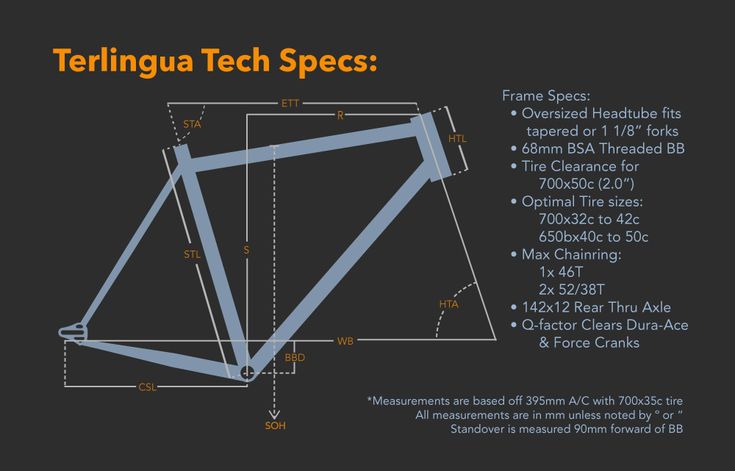 Unlike tubes, conventional clincher tires have a noticeable difference between "700c" and "27". If suddenly somewhere there is a mention of the size of the tubes "27", then it means the full-size version used in most racing bikes.
Unlike tubes, conventional clincher tires have a noticeable difference between "700c" and "27". If suddenly somewhere there is a mention of the size of the tubes "27", then it means the full-size version used in most racing bikes. Contents
Different tire markings, even for the same type of bike, often confuse buyers. What tire sizes are there? And how to choose the right tires?
Most people think 26" is for mountain bikes, 28 for road bikes, etc. And they purchase products based solely on these parameters. This is wrong, because when choosing rubber, marking, width, purpose and other indicators should be taken into account.
And they purchase products based solely on these parameters. This is wrong, because when choosing rubber, marking, width, purpose and other indicators should be taken into account.
In addition, tires that are identical in appearance may have different markings. This is the manufacturer's prerogative. Without a thorough study of the dimensions, choosing the right tires will be extremely difficult.
A typical marking for hybrid bicycles is 700C*42. Such bikes combine elements from mountain and road bikes. Mountain bikes are usually marked 26*2.1. These designations have been used for several decades, in connection with this, the established traditional marking system is vague.
This labeling of tires on different types of bikes results in the tires meeting a specific ISO size range. This means that one specified width according to the marking (for example, 2.1 inches) can differ significantly in the physical sense.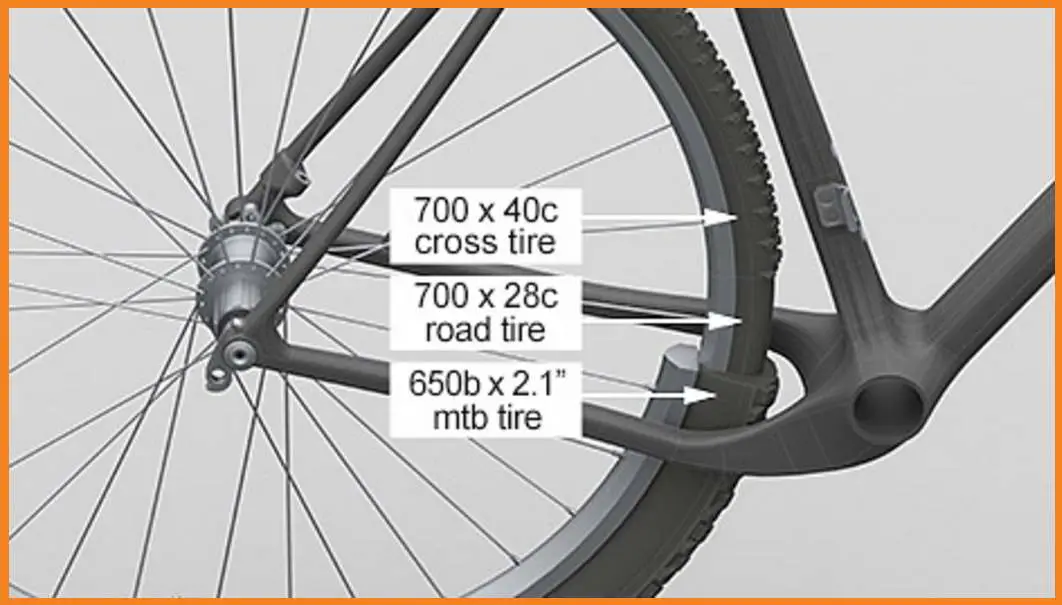
The same problem applies to standard markings on 29-inch tires. Their landing diameter is 622 mm, which corresponds to road and hybrid bikes. The main difference is the greater width. A wide tire is not applicable to a road or hybrid bike, a narrow tire is not applicable to a niner.
So that the problem of choice does not become urgent, you should know the sizes of bicycle tires for specific types of bikes:
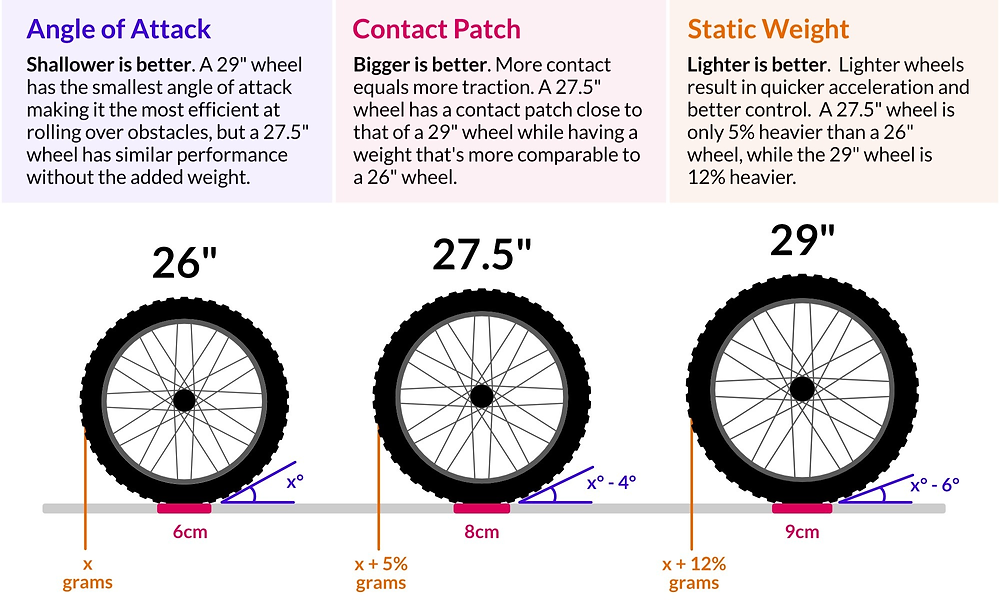
If you are planning to buy tires for the first time, it is recommended to find the size designation on the rim of your bike. In the absence of such, some prefer to take the rim with them and go to the appropriate store to select the correct tire size for the help of the seller. In the absence of such an opportunity (or desire), the measurement of the wheel diameter is carried out independently.
In the absence of such, some prefer to take the rim with them and go to the appropriate store to select the correct tire size for the help of the seller. In the absence of such an opportunity (or desire), the measurement of the wheel diameter is carried out independently.
The simplest method is by radius. To measure, you need a tape measure or a centimeter, the edge of which is placed strictly at the sleeve axis. In this position, carry out to the edge of the tire. The result obtained is the radius of the wheel.
To determine the value in millimeters, this figure is multiplied by 10, in inches - by 2.54. The resulting figure can be multiplied by 2 to calculate the size of the diameter. If fractional values are obtained, they are rounded up to
In the absence of a tape measure or centimeter, the second standard method is applicable: This is the simplest method. For calculation, measure the segment from the central part of the sleeve to the extreme side of the rim, and increase this value by 200 times. You will get the diameter in millimeters, according to which the rubber is chosen. Production in France, Great Britain and a number of other countries apply their own size designations. This causes a lot of confusion when choosing by labeling. Until recently, there was one type of marking - based on the outer diameter of the tire in inches or millimeters. To date, the use of such a marking scheme is not advisable due to a possible mismatch with the rim bore diameter. Markings: To do this, you can use the indicated table, but it is better to follow the recommendations from the manufacturer. In addition, tires are selected depending on the driving style: 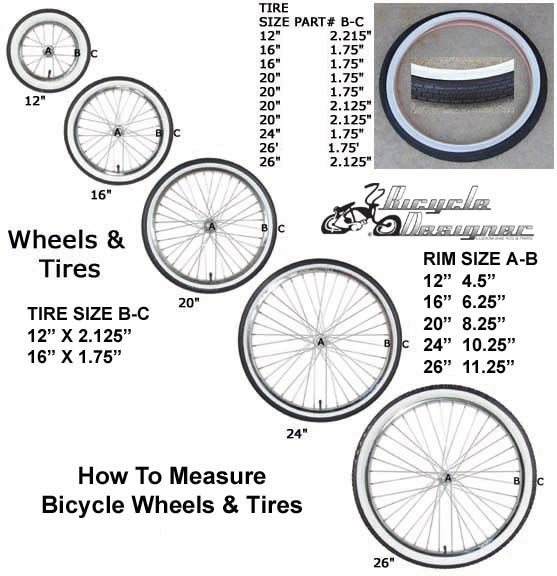 14 to get the diameter;
14 to get the diameter; ISO
measurement Types of markings for bicycle tires
 Similarly, the designations are applied to the cameras.
Similarly, the designations are applied to the cameras. 507 24/1.5-2.125 559 26/1-2.35
